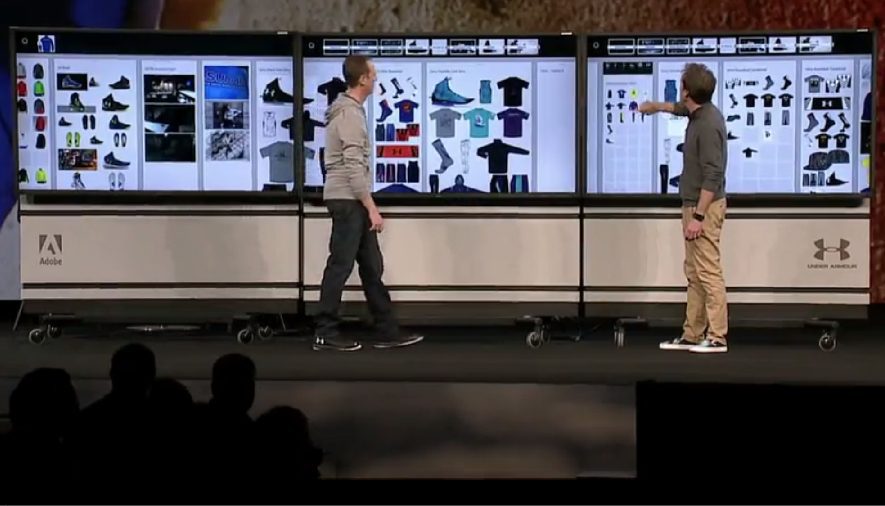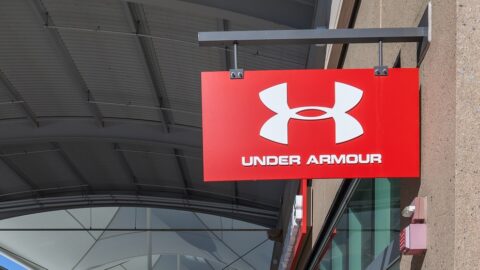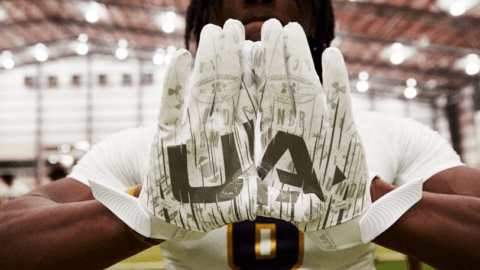More than 6,000 marketers congregated in Salt Lake City, Utah, for the 2015 Adobe Summit to learn how to create consistent customer experiences that connects to their products. Although this was undoubtedly a core theme for the event, which took place March 9-13, there was another core theme for retailers in attendance: How to successfully integrate digital presence with the brick-and-mortar store.
In the opening keynote, Adobe execs and their partners unveiled updates to the Adobe Marketing Cloud, Adobe Campaign and Adobe Experience Manager (AEM), and also revealed new solutions.
For one demonstration, Jody Giles, SVP of Product Integration and Commercialization at Under Armour, highlighted how large AEM Screens help the retailer bring products from “concept to customer.”
The AEM screens enable retail marketers to display interactive content such as product images, 3D interactive models and videos. The screens can integrate with a brand’s mobile app, enabling shoppers to upload photos directly from their mobile phone to the screens with the swipe of a finger. If a shopper already has a product in mind when they go to an Under Armour location, they can pass that item onto a large screen and display it to in-store employees.
Loni Stark, Senior Director of Strategy and Product Marketing at Adobe Systems, said that the screens serve to disrupt retail by making the in-store visit more interactive and provide a consistent and continuous experience across all channels.
“The shopper that comes into a retail store today is very different than shoppers from 10 or 20 years ago,” Stark said in an interview with Retail TouchPoints. “You want to step into the store for a particular reason, but most of us feel a heightened level of frustration. It’s not because store associates have been trained any worse than they were in the past; it’s because they haven’t been trained differently and our expectations have increased. The point of frustration is having to share the entire context of why you’re in the store. The screens make for a cool demo, but more importantly, we’ve connected a very digital experience on web sites and mobile apps to an analog conversation that has value.”
Personalization Still Top-Of-Mind For Retailers
Personalization and real-time marketing are two trends that are on the minds of most retail marketers today, according to Michael Klein, Director of Industry Strategy for Retail, Travel and Hospitality at Adobe Systems. Klein also noted that in conversations with retailers, other core concerns include how to:
-
Acquire and understand new audiences;
-
Retain customers in the wake of disruptive retail competitors;
-
Optimize mobile, including the app and the mobile site; and
-
Refine the multichannel customer experience.
“If last year was the year of mobile, this year I see more of how digital can enhance the in-store experience,” Klein said in an interview with Retail TouchPoints. “Some might call it ‘merchantainment,’ which is the idea of entertainment and merchandising together, and we all know that foot traffic in physical stores is down, so there needs to be a more compelling reason to go into the brick-and-mortar space. The pet industry is doing that more, where they’re taking space out of inventory and providing more services in the physical store such as grooming. Williams-Sonoma and Sur La Table have been doing this for years with their cooking classes. You’re going to see more of that, and digital is a weapon that more retailers are investing in.”
Closing The Personalization Gap
Numerous retail-focused sessions held throughout the Summit focused on the industry’s ability to monetize the convergence of digital and physical media. Speakers included:
-
Paul Elliott, EVP of Marketing and Innovation at Rosetta;
-
Jason Goldberg, GVP of Commerce Strategy at Razorfish;
-
Frederick Lecoq, SVP of Marketing at FGL Sports LTD;
-
Rex Lee, VP of Digital Technology at Canadian Tire; and
-
Adam Silverman, Principal Analyst at Forrester.
Klein indicated that there is a personalization gap between retail marketers and consumers. In fact, 83% of marketers feel they are doing a satisfactory job in personalizing to the consumer, while only 29% of consumers feel the same way. One of the pitfalls here is that while 86% of marketers were personalizing the desktop experience, only 69% were personalizing in-store. Mobile hasn’t yet caught up to either venue, with 56% personalizing the experience.
Silverman stated that in-store personalization faults are not a technology problem, but suffer due to a lack of strategy and a failure to integrate teams and systems. Additionally, the measurement of success isn’t clear and privacy concerns aren’t being addressed.
To address these issues, Silverman recommended that retailers set the groundwork for enabling a single view of the customer, expose inventory visibility and focus on service and convenience.
“Build your digital store platform,” Silverman said. “Start to expose your legacy systems and think about turning them into systems of engagement rather than systems of record.”
SportChek Gets “Phy-gital”
Lecoq of FGL Sports LTD, parent company of sporting goods retailer SportChek, shared insights regarding how the retailer transformed its Edmonton, Canada store into a “Phy-gital” business. The location, which touts a variety of digital technology, has experienced a 50% lift in sales since the revamp took place.
The store includes 800 screens with 220 channels worth of product images and deals on display, as well as community walls filled with local sports information. Special technology also allows shoppers to walk on a treadmill and find the correct sneaker size that fits them best, order skis that are professionally tuned, or test their golf swing and have it analyzed to correct mistakes.
SportChek has since remodeled a second “Phy-gital” store in the Vancouver area.
“Most of the time, retailers put technology in their stores and in their marketing, but we’re doing it much more from a ‘Why not?’ perspective,” Lecoq said. “We need to shift our mindset and say precisely ‘What are we doing this for?’ Technology in the store is not a ‘Why not,’ it’s a ‘What for?’ and that has to be your starting point. Digitizing your store is redefining your customer experience. Being a brick-and-mortar retailer, if I can redesign the experience, I will create value.”
Lecoq shared five rules the SportChek team followed to create the new store concept:
-
Content is key in the new media world;
-
Move from broadcast to unicast by replacing print flyers with digital flyers;
-
Every impression should be the result of a calculation;
-
ROI and spending effectiveness — not marketing spend — drive the business; and
-
Remodel the POS into point of experience.
“Retailers need to focus on the purchase stage of the consumer decision journey,” Lecoq said. “It’s all about the last click. Retailers need to find the most influential touch points and win at each of them. Being a retailer, the evaluation stage is critical. How do you go there? Measure everything that you do.”













